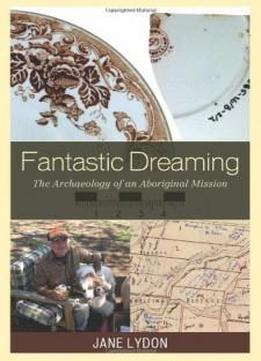
Fantastic Dreaming: The Archaeology Of An Aboriginal Mission (worlds Of Archaeology)
by Jane Lydon /
2009 / English / PDF
3.9 MB Download
Fantastic Dreaming explores how whites have measured Australian
Aboriginal people through their material culture and domestic
practices, aspects of culture intimately linked to Enlightenment
notions of progress and social institutions such as marriage and
property. Archaeological investigation reveals that the Moravian
missionaries' attempts to 'civilize' the Wergaia-speaking people of
northwestern Victoria centered on spatial practices, housing, and
the consumption of material goods. After the mission closed in
1904, white observers saw the camp settlements that formed nearby
as evidence of Aboriginal incapacity and immorality, rather than as
symptoms of exclusion and poverty. Conceptions of transformation as
acculturation survived in assimilation policies that envisioned
Aboriginal people becoming the same as whites through living in
European housing. These ideas persist in archaeological analysis
that insists on Aboriginality as otherness and difference, and
equates objects with identity. However Wergaia tradition was
place-based, and, often invisibly, Indigenous people maintained
traditional relationships to kin and country, resisting white
authority through strategies of evasion and mobility. This study
examines the complex role of material culture and spatial politics
in shaping colonial identities and offers a critique of
essentialism in archaeological interpretation.
Fantastic Dreaming explores how whites have measured Australian
Aboriginal people through their material culture and domestic
practices, aspects of culture intimately linked to Enlightenment
notions of progress and social institutions such as marriage and
property. Archaeological investigation reveals that the Moravian
missionaries' attempts to 'civilize' the Wergaia-speaking people of
northwestern Victoria centered on spatial practices, housing, and
the consumption of material goods. After the mission closed in
1904, white observers saw the camp settlements that formed nearby
as evidence of Aboriginal incapacity and immorality, rather than as
symptoms of exclusion and poverty. Conceptions of transformation as
acculturation survived in assimilation policies that envisioned
Aboriginal people becoming the same as whites through living in
European housing. These ideas persist in archaeological analysis
that insists on Aboriginality as otherness and difference, and
equates objects with identity. However Wergaia tradition was
place-based, and, often invisibly, Indigenous people maintained
traditional relationships to kin and country, resisting white
authority through strategies of evasion and mobility. This study
examines the complex role of material culture and spatial politics
in shaping colonial identities and offers a critique of
essentialism in archaeological interpretation.











